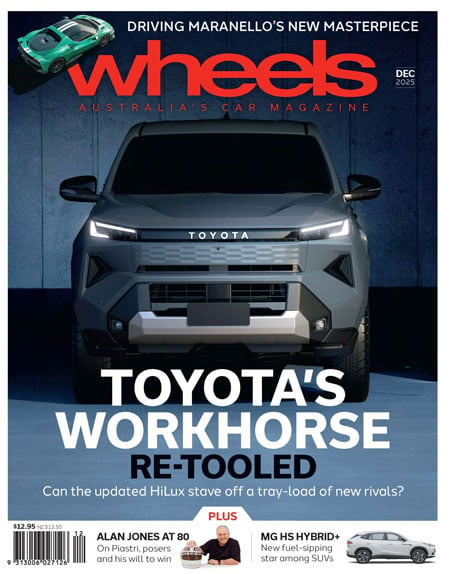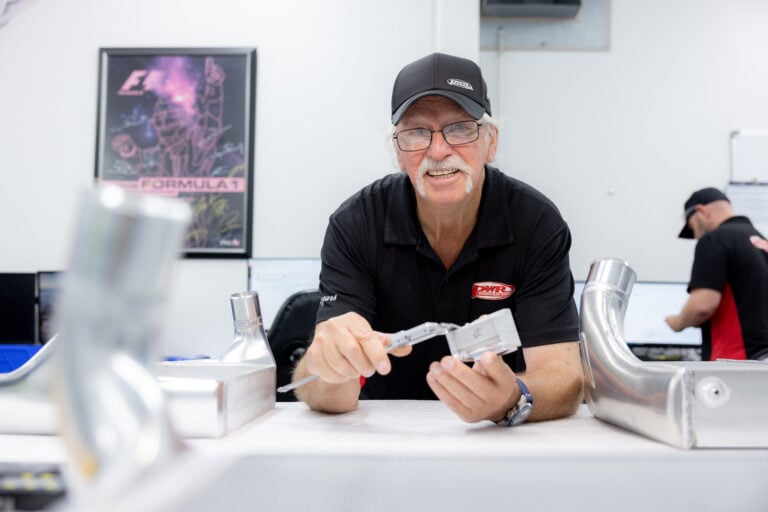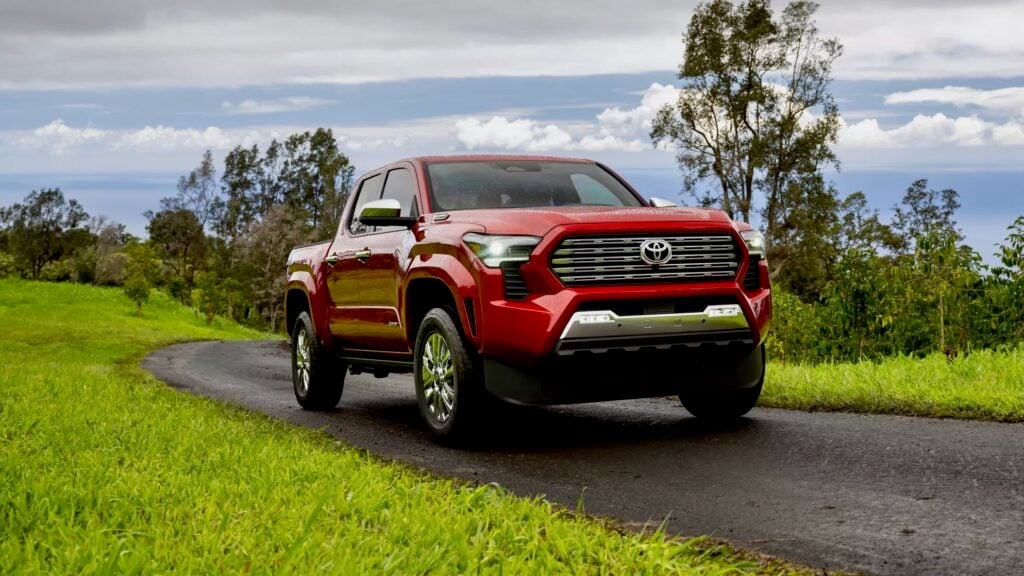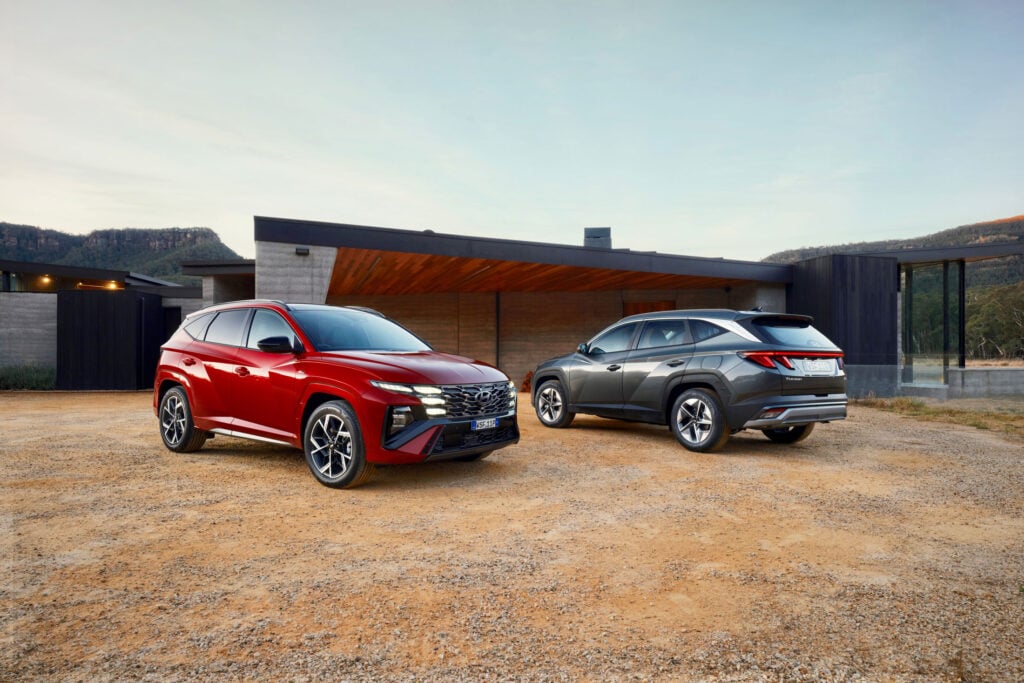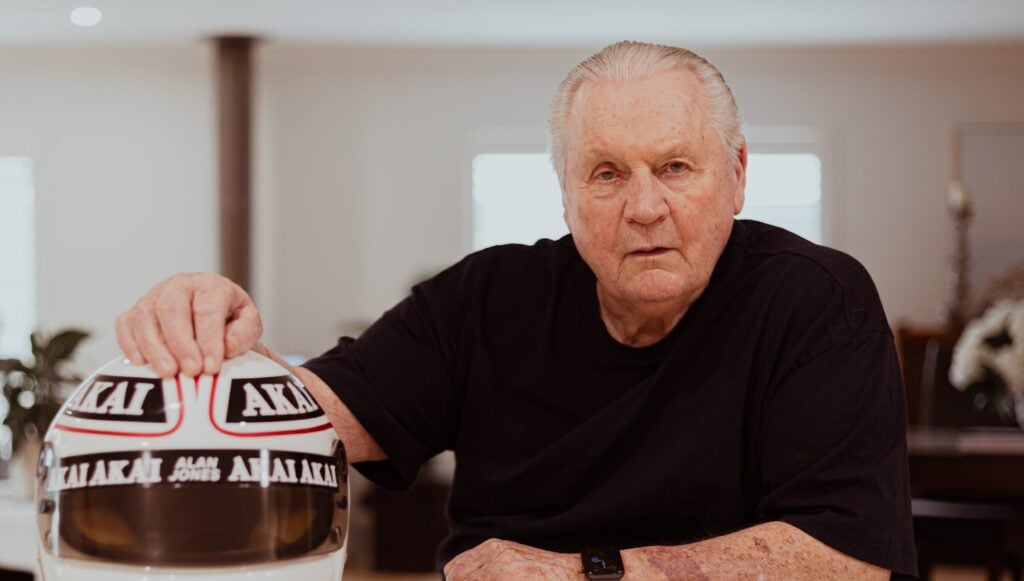What happens when two mad AFL supporters get to name a car company? Premcar.
The automotive design, engineering and production company in Melbourne rose from the ashes of Ford Performance Vehicles and has since earned an international reputation for the quality of its work.
But the name? That’s a very different story, as company CEO Bernie Quinn explains.
“Most people will think it stands for ‘Premium Cars’,” he tells Wheels. “But, you know what, when we did the management buy-out of FPV joint venture partner Prodrive Australia, we had to have a ‘place-holder’ name for all the paperwork. I’m a mad Hawthorn supporter in the AFL and my old boss was mad about Carlton, so he called it ‘Premiers Carlton’. So, Premcar.
“It was him taking the piss out of me. But it’s not a bad name so we never changed it. “Besides, Hawthorn has been much more successful than Carlton. We’ve had three premierships since the Premcar deal,” he laughs.
And the success of Premcar?

Right now it’s best known for the Warrior versions of the Patrol and Navara it developed for Nissan Australia and produces at its factory in Melbourne. But it has done plenty of other work, from a thundering 1966 Ford Bronco ‘restomod’ desert sled to its widespread use of a ‘multi-body dynamics simulation’ software package for the development of – wait for it – caravans and a bunch of Chinese EVs. And that’s just the stuff we know about.
It’s a distant trip from the days when FPV was all about homegrown go-faster Falcons. In 2025, everything at Premcar is about technology, diversity and a ‘just say yes’ attitude to new projects. And it’s growing fast.
“One thing I’ve learned over the years is that you have to maintain a diversity of customers and skills,” Quinn says. “Strategically, what that means (is that) if we just do one type of job, we won’t learn anything new. We maintain project work and engagement, not just in automotive but also in aerospace and defence. And in marine. I have to keep a big office of engineers busy. If we don’t work on autonomous vehicles, or electric vehicles, we don’t learn anything we can offer to a company like Nissan.”
It’s been the same for much of Quinn’s life and career. And it’s reflected in his personal garage.
“I think it’s seven cars. No, it’s actually six. I’ve got a little Ag bike, too. They all have massive emotional attachments. I’ve got a 996 Porsche 911 which I love, but is it the favourite? It depends on the day. I have an XY Fairmont, white with burgundy. It was my mum’s car. I’ve restored it – it’s pretty much perfect.”
And then there is his Studebaker.
“My first car was an XY Falcon, because I was Ford crazy. I have my second car, which is a Studebaker Hawk. I picked up my wife in that car. She thought I was a doofus and then I turned up in the car and she started to take me seriously. How could I get rid of that? It’s a 1963. It’s Australian built. They built them in Tottenham in Melbourne somewhere. But I’m not driving it at the moment. It’s at a mate’s property. It will be a restomod at some time. It has a lot of sentimental value.”

So Quinn was a car guy from the get-go, but he’s done a lot of work to get to the top seat at Premcar.
“I was a battler, a late bloomer,” he remembers. “When I finished the Higher School Certificate I didn’t get enough marks to get into university so I went to work at the Gas and Fuel Corporation (a Victorian government authority) and did maths at night school. I went the hard road.
“I was not even lazy. I just didn’t know what the hell I was doing. I’m the youngest of eight kids so
I had three or four mothers, not just one. To be brutally honest, I didn’t know how to take care of myself. I had this loving and caring upbringing, but I could hardly tie my shoelaces. I had to be shocked into action.”
We’ll get to that in a minute, but for now there are some basics.
Quinn is 53 and lives in the fairly unfashionable suburb of Thornbury in Melbourne. He has just celebrated 21 years of marriage to Kieran and they have three children, Jamie, Cecilia and Genevieve. He has a degree in engineering as well as an MBA, both from Victoria University.
Premcar has around 120 employees, with two facilities at Epping in the north of Melbourne – one responsible for engineering and things like fast prototyping work, the other housing the manufacturing lines for the Warrior models. So, back to the Quinn story.

“I got my girlfriend at the time pregnant when I was 21. Jamie is 33 now,” he says. “All of a sudden, I had a little baby to deal with, and I still hadn’t finished uni. That was the shock that got me starting to take some responsibility.
“One thing I was certain about was I wanted to work with cars. I got the job at Gas and Fuel because I knew I had to branch into mechanical engineering. I hated it (the job). But it was good, because it would have been easy for me – not being fully in control of my life – to have stayed if it gave me any satisfaction.”
He quickly moved on to his first automotive job, at Toyota Australia, which was a combination of education and frustration.
“If I wasn’t so passionate about cars I don’t think I could drive myself to the outcomes that we get to, and drive the team to get to the outcomes.”
“I was a production engineer, based in Bertie Street in South Melbourne, near where Brock had the Holden Dealer Team. I was a little bit of a fish-out-of-water there. It was a very conservative workplace. I was gutted a bit, because this was my dream.”
He was working as an engineer, but not the way he wanted.
“One of the first jobs that came across my desk was modifying the factory to do the Camry Sportivo. I was thinking the car would be a Falcon XR6 competitor, but the sum total of my area was four new suspension bushes on the subframe. And it was like an 18-month project.”
As a side hustle he was the singer in a band.
“I borrowed a Tarago from the press fleet and that was our tour bus for one weekend. It was good fun, but…”
It was time to move, and he went to Dana – an American drivetrain company – doing front and rear suspension work for the Ford Territory. There was also some Falcon suspension work. Then came a life-changing meeting with legendary Ford engineer, and global suspension guru, the late Richard Parry-Jones. Just as Peter Hanenberger had put Radial Tuned Suspension into a new generation of Holdens, Parry-Jones made cars like the Ford Focus into world beaters with brilliant driving dynamics.
“I learned how important it is to get back to fundamentals to make the platform deliver a brilliant ride-steering-handling package. If it’s hung off a bit of plasticine it makes zero difference. There was elimination of friction in systems – things like ball joints and bushes and steering racks. So you get the purity of inputs into the car. Then if there are noises you tune them out, you don’t mask it. It was a really good learning experience for me.”

Then Quinn – who still recalls the inspiration he got from reading the Mel Nicolls’ story about driving down the Hume Highway in Wheels – spotted a potential dream job as a driveline engineer at Ford Performance Vehicles and joined a team under the leadership of David Flint. He was tough and uncompromising and led the creation of 42 high-performance models before retiring at the start
of 2006.
“I got along really well with him (Flint),” Quinn recalls. “Not everyone did. My dad was a similarly large, potentially abrasive, character. In the first meeting he asked ‘Who are you?’ Then he said ‘Our drivelines are shit – fix it’.”
Things were already moving fast, as he had been promoted to a manager’s job before he even sat down at his desk in Glenbarry Road, where Tickford Racing is now located, for the first time.
“My first job was to put the six-speed manual gearbox into the XR6 Turbo, XR8 and GT, and F6. NVH (Noise, Vibration, Harshness) was a nightmare. We had torsional vibration and gear rattle. Even more fundamentally, the thing didn’t fit in the transmission tunnel. So we tipped the powertrain over, changed the driveline angle, so it would sit lower.”
He moved to every department at FPV, from powertrain to chassis, and was eventually promoted to Chief Engineer in 2010 with a head count of around 80 people.
“Then, in 2012, Ford Australia were manufacturing Falcons at a fraction of the volume they previously were. And they basically took over the building of GTs and F6. It didn’t make any sense for them to out-source and so the joint venture with Prodrive (a UK motorsport and engineering company owned by David Richards) collapsed,” said Quinn.
“My colleague Jim Jovanovski and I got offered the business as a management buy-out, so we did that and took it over. “At that stage, with far fewer employees, it had a $2-3 million turnover, concentrating on engineering services. It’s a similar size now to what it was in FPV’s heyday. I’m very proud of that. It’s never easy.”

They kept the Prodrive name for a couple of years, to ensure they did not “spook the horses” and did a lot of work for Chinese customers. Quinn will not get into financial details, but admits the current turnover is somewhere north of $40 million a year. He is happier talking about the work at Premcar over the years.
“You have to go back to the customer and their user expectation. A Nissan customer will be different to a Ford customer or a Tesla customer. We don’t have a separate research department, but we spend a shitload of money on research and development. And we try to spend it on a project.”
The most recent trial for Premcar was during the pandemic.
“In Covid I didn’t want to let anyone go so we had projects like suspension kinematics projects, powertrain integration projects. One piece of innovation was building prototype vehicles for OEMs (Original Equipment Manufacturers). So, if you’ve got a 2015 Commodore and you’re trying to build a 2020 Commodore, you have a whole new vehicle electrical architecture. You’ve got to make the systems work. We invested into CAN translation modules.”
Premcar is also heavily into specialised manufacturing work.
“We do a whole heap of 3D printing. It’s either manufacturing or tooling. Every Patrol Warrior has four 3D printed parts in it. The big bit of software that we do a lot of work with is mechanical simulation. We can tune the hard points on a vehicle. We even used that to develop a unique caravan suspension system.”
Its Terraglide package is claimed to be the only one in the world with an anti-roll bar, as well as tricky engineering to prevent the van driving the car.
“We’ve reduced the spring rate down to something like a car. We’ve improved the kinematics so the caravan doesn’t try to jack the car.”

But wait, there’s more.
“We even did a helicopter program for a Japanese OEM. Most people think automotive engineering is not as sophisticated as aerospace. But it comes down to innovation. It’s not just engineering, it’s product development systems. It spits out a better outcome.”
Although Premcar is booming, Quinn regrets what was lost when Australian carmaking ended. “What a terrible fucking shame. I think the big thing we lost was to be protective of our people and our technology,” he says. “It’s the lack of opportunity for people like me, who were mad, mad car people and wanted to see it all happen. There is stuff like sovereign capability.”
Still, there is some good news.
“We haven’t lost it all. What Premcar and Walkinshaw Automotive is doing… To see how much joy it brings to customers, to have a car that’s specifically developed for Australians on our roads, and the people in the factory working on the cars. A lot of the younger ones thought they would never be able to work on cars. The engineers get to apply their passion into something that’s well received by customers and the market. The people who really want a locally developed and tuned vehicle can find them.”
Quinn also sees a modern reflection of the age-old rivalry on Aussie roads between Holden and Ford.
“I don’t think that exists everywhere. Is that diminishing? I don’t think so. I think that tribal passion has been fostered in Australia. Bathurst is a big part of that. When dad brought home a new car it was a big event. I had that obsession with cars and Ford. It was insane. And I got to live that out.”
Quinn believes his passion was a key driver for success with Premcar.
“If I wasn’t so passionate about cars I don’t think I could drive myself to the outcomes that we get to, and drive the team to get to the outcomes. That energy has got to come from somewhere. It’s a passion to make great cars and build then and drive them and enjoy them.”
How, then, does he see the future?
“Premcar will probably be 7-10 times bigger than what it is today. And it will have facilities in different continents. We’ll have our first international facility manufacturing vehicles in a couple of months.”
This interview originally appeared in the April 2025 issue of Wheels magazine – subscribe here.


